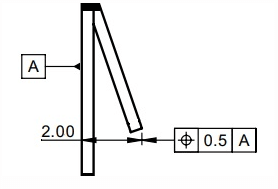lyx111
Automotive
- Mar 4, 2021
- 2
Would like to ask, is this dimensioning valid?
this is for dimensioning the distance between the tab and the flat surface.
How is it different from linear dimensioning of 2+/- 0.25?

this is for dimensioning the distance between the tab and the flat surface.
How is it different from linear dimensioning of 2+/- 0.25?

